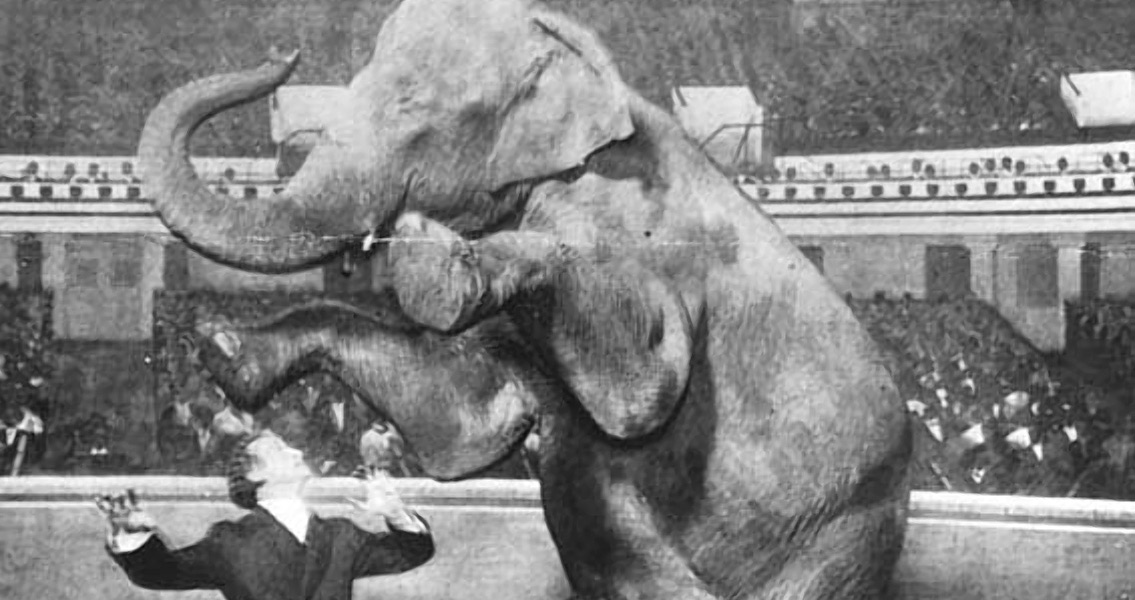<![CDATA[As soon as the 24th October, 1926, Houdini show in Detroit started it was clear something was wrong. Renowned as one of the greatest performers of his generation, Harry Houdini's act seemed off. The magician missed cues, needed his assistants to step in and help him through his tricks, and generally seemed to be rushing through his routine. During the third act, Houdini suddenly asked his assistants to lower the curtain. He collapsed where he stood, and had to be carried back to his dressing room. Houdini was exhausted, his temperature had risen to dangerous levels and he was in tremendous pain. A stunningly fit man, he refused medical care until the following morning, when his wife Bess insisted he go to the hospital. Houdini had been diagnosed with acute appendicitis the day before the show, yet even with a temperature of 102 degrees he refused assistance and continued his act. As soon as he arrived at hospital on the 25th October the doctors removed his appendix, but it was too late. On 31st October, 1926, Harry Houdini died in Detroit, Michigan, of peritonitis from a ruptured appendix. Even now, Houdini's demise and the sequence of events leading up to it are a source of mystery. Many argue his death was somehow connected to several punches to the stomach from McGill University student J. Gordon Whitehead. On the afternoon of 22nd October, 1926, Whitehead and another student visited Houdini in his dressing room. The great magician and illusionist had boasted he could withstand any blow to the abdomen, and the university students had come to check the claim. Whitehead supposedly landed several swift, hard blows to Houdini's stomach before he'd had time to properly tense and brace his muscles. Houdini was floored in agony. Some medical historians claim the blows could have been enough to rupture Houdini's appendix and ultimately kill him. This was the verdict declared at the time by Houdini's life insurance provider, although more recently doctors have suggested that the chances of blows to the stomach actually rupturing someone's appendix are incredibly slim. Another theory says that the punches themselves might not have directly caused Houdini's death, but rather led to him failing to realise the severity of his condition. As pain gripped Houdini's body he assumed it was the after effects of the blows to the stomach, he had no idea he was suffering appendicitis. There are some who take a much more sinister view of Houdini's death, however. For much of the 1920s Houdini had fervently set about debunking spiritualists, mystics and psychic mediums who claimed to be able to communicate with the dead. He publicly offered a $10,000 reward to anyone who was able to prove they possessed supernatural abilities, and the prize went unclaimed. Most famously, he exposed Mina Crandon, better known as Margery, one of the most renowned mediums in the USA at the time. By 1925, Houdini was a leading figure in a campaign to push the government into regulating and restricting mystics in the United States. Inevitably, Houdini's actions infuriated spiritualists and the magician started to receive death threats, though he continued his crusade unperturbed. Some conspiracy theorists don't buy the story of appendicitis and several blows to the stomach leading to Houdini's death. They instead argue that the great illusionist and entertainer was murdered by spiritualists. Exact details of how this could have been possible vary. Some claim that Whitehead, a man who was never investigated for his role in Houdini's death and lived in obscurity afterwards, was actually working for a spiritualist organisation; others that Houdini was poisoned, the blows to the stomach having no effect other than providing a convenient cover up. Houdini was buried on 4th November 1926. Since then many have campaigned to have his body exhumed, to submit it to modern, more rigorous forensic techniques and to solve the mystery of Harry Houdini's death once and for all. ]]>
Spiritualists, Appendix and Punches – The Death of Houdini
